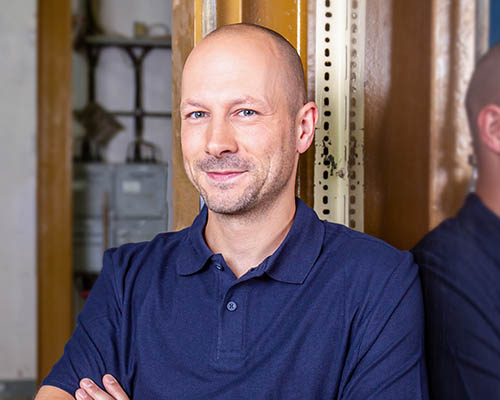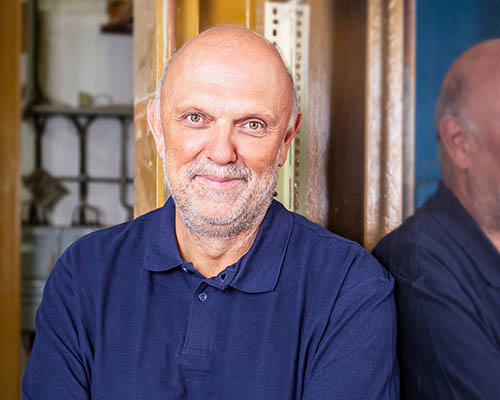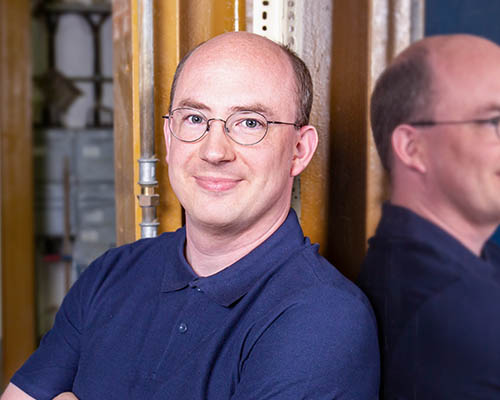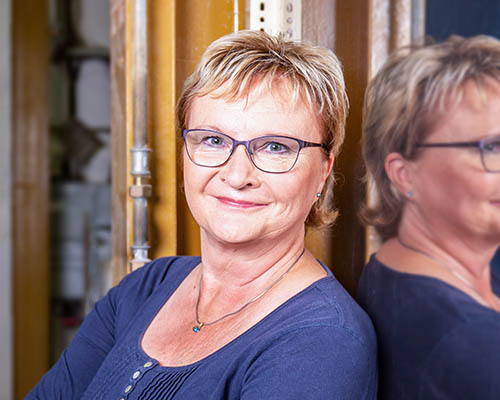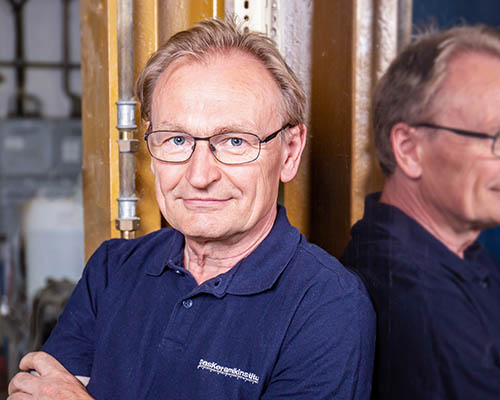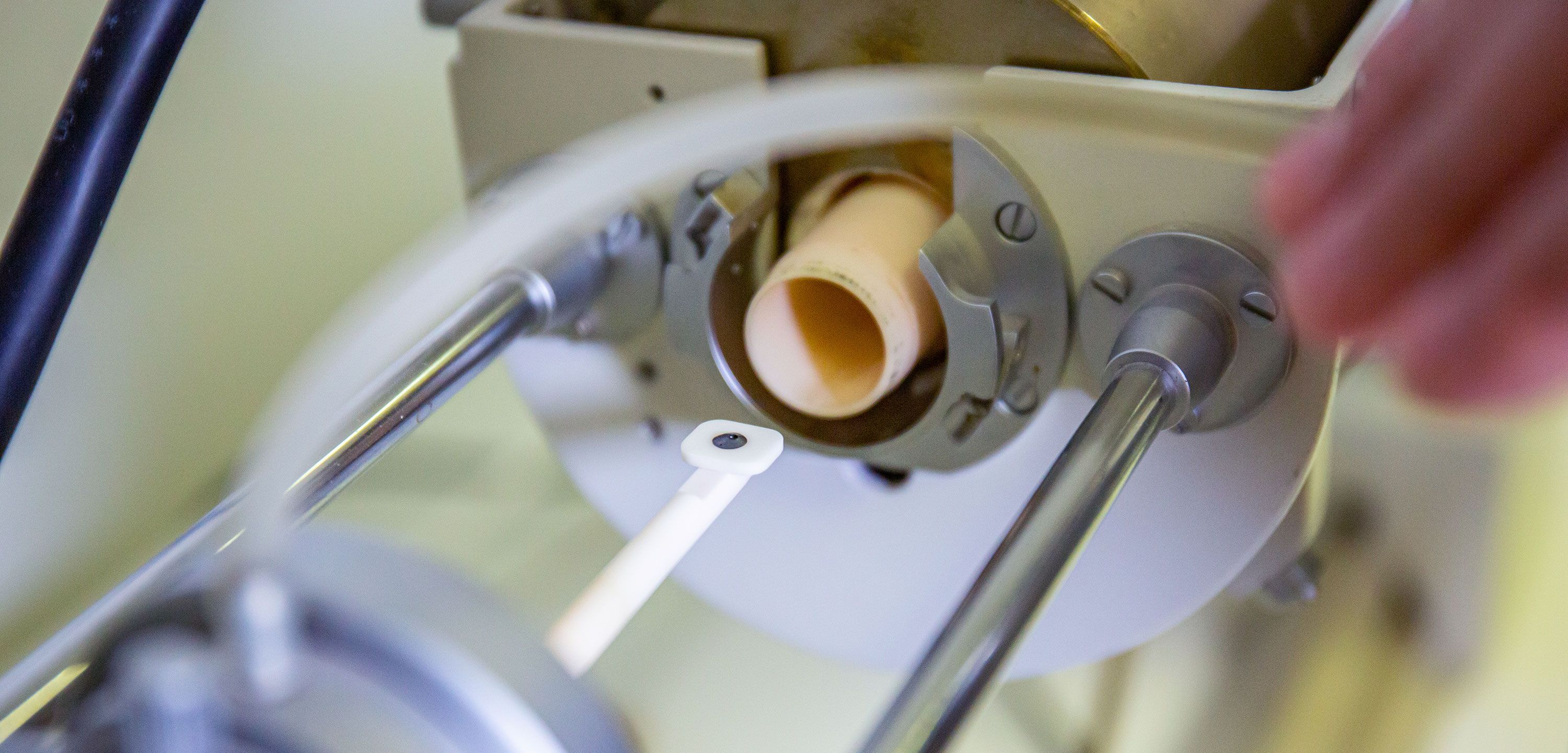
Physical-Technological Tests
The Keramikinstitut offers all testing methods relevant for evaluating the physical properties of raw materials and ceramic materials. Their pressure strength can be determined, as well as their bulk density or grain size distribution. In our laboratories, we can carry out all kinds of sample preparation too. As many testing methods for ceramic materials are suitable for other materials as well, we can test a wide range of non-ceramic materials at your request.
Physical-Technological Tests; Sample Preparation
- Drying, Crushing, Homogenizing, Splitting according to DIN 51061-2 and DIN 51078
- Selection of specimens from semifinished- or finished products, also from bounded and similar materials
- Sampling from ceramic suspensions, granuled or powder materials
- Preparation to a
- casting slip
- plastic mass
- pressable mass
- Sample preparation
- de-airing extrusion
- dry pressing
- manual shaping into plaster moulds
- manual and pressure casting
Physical-Technological Tests; Testing Methods
- Moisture following DIN 51078
- Plus mesh following DIN 66165-1 and -2
- Test sieving following DIN 66165, part 1 and 2, 5, wet and dry
- Particle Size Distribution 0,04 - 400 µm by laser granulometer CILAS1064, following testing station instruction 15, in water, alcohol or other dispersing agents
- Particle Size Distribution 0,1- 200 µm by SediGraph 5100, following DIN EN 725-5
- true density by Helium-Pycnometer (Accupyc)
- plus mesh
- particle size distribution including decomposition by ultrasonic or shaking 0,1 – 200 µm
- analysis of persistent sedimentable materials
- Bulk Density following DIN EN 1097-3
- True Density
- by pycnometer, following DIN EN 993-2 A1
- by Helium-pycnometer (Accupyc), following testing station instruction 86
- Linear Shrinkage following operating instruction 8965
- Apparent Specific Gravity of unfired moldings or parts of them following operating instruction 88
- Firing and Total Shrinkage following operating instruction 8965
- Loss of Ignition following DIN 51081
- Deformation due to firing process following operating instruction 18889
- Verbal Assessment of fired samples e.g. firing color, smelt outs, property of surface
- Bending Strength after firing following DIN EN 993-6
- Impact Bending Strength following operation instruction 20471
- Compression Strength following DIN EN 993-5 incl. sample preparation by sawing and core boring (max. 520 X 320 X 320 mm³)
- Water Absorption following DIN EN 993-1 resp. DIN EN ISO 10545-3
- boiling method
- vacuum method
- impregnation method
- Apparent Bulk Density of fired samples following DIN EN 993-1
- Open Porosity following DIN EN 993-1, completion to water absorption and apparent bulk density
- Specific Surface Area of solids following DIN 66132, BET following DIN EN ISO 18757 (old: DIN EN 725-6) by AREA-meter II (Co. Ströhlein Instruments) following HAUL and DÜMBGEN, range 0,1 - 1000 m²/g
- Pore Size Distribution by the high pressure mercury porosimeter Pascal 140 and 440 series (Thermo Fisher Scientific S.p.A.) following testing station instruction 76 (DIN 66133)
- micro pores 15 µm - ca. 4 nm
- macro pores 116 µm - ca. 4 µm
- complete measure including sample preparation and determining apparent bulk density
- Review of the Wetting Ability of low viscose media on solid surfaces by determination of the Contact Angle at room temperature; stereo microscope Stemi 2000 (Co. Carl Zeiss)
- Measurement of the Geometrical Properties following DIN EN 1024 resp. DIN EN ISO 10545-2
Mineralogical Analysis
By using approved and industry-standard testing methods, the Keramikinstitut can investigate the mineralogical composition of raw materials and ceramic materials to predict their application behaviour.
Mineralogical Testing following DIN EN13925, Parts 1 - 3
- e.g. clay, kaolin (china clay), rock, quartz, feldspar, talcum, soil, calcite, dolomite, ceramic body, pigments, ceramic products (building ceramics, tiles, sanitary ware, technical ceramics, porcelain, insulators), remnants
- Mineralogical analyses by XRD (x-ray diffraction) following testing station instruction 45, 47-49, triple determination
- Phase analysis, qualitative, overview diffractogram
- Phase analysis quantitative, clay
- qualitative analysis – overview diffractogram
- determining of feldspar, quartz; identification of different clay minerals like Kaolinite, Illite, Smectite, Mica, Montmorillonite; differentiate of swellable and non swellable 3- and 4-layer clay minerals
- determining of Chlorite, Hematite, Calcite, Dolomite, Anatase, Goethite and further mineral phases
- Phase analysis quantitative, refractories and other fired materials / products
- qualitative analysis – overview diffractogram
- determining of Quartz; Mullite, Cristobalite, ,Corundium, Cordierite/ Indialite, Si3N4-phases, SiC, Silicium a.s.o.
Chemical Analysis
The Keramikinstitut offers chemical analysis of both raw materials and ceramic materials. We focus on elements and compounds made important by industry technologies or regulatory provision. As many chemical analyses for ceramic materials are suitable for other materials as well, we can analyse a wide range of non-ceramic materials at your request.
Chemical Analysis
- e.g. clay, kaolin (china clay), rock, quartz, feldspar, talcum, soil, calcite, dolomite, ceramic body, pigments, frit, glaze, enamel, ceramic products (building ceramics, tile, sanitary ware, technical ceramics, porcelain, insulator), glas, remnants
- Silicate analyses by XRF (x-ray fluoreszence) quantitative, following DIN 51001, (basically.: SiO2, Al2O3, Fe2O3, TiO2,CaO, K2O, MgO, Na2O, LOI)
- XRF-Screening range from Fluor to Uranium
- Determining of Boron and Lithium in glazes or glasses (wet chemical decomposition, ICP)
- Determining of pollutions following guideline for industrial sludge act
- Determining of Fluorine, Sulphur and Chlorine in bodies and raw materials (XRF);
- as emission relevant contents
- differentiation into sulfide and sulfate
- V, Mn, Co, Sr, Zr, Ba, Cr, Ni, Zn, Mo und Cu in silicate materials, concentration > 0,01 % at the ignited (XRF)
- in addition of silicate analysis
- as separate analysis
- Water soluble salts
- percolation according to DIN EN ISO 21587, part 1 and 2 (old: DIN 51 100)
- eluation following DIN 38 41, part 4
- Analysis of water (process water, eluate, percolate and further)
- content of SO3 following DIN EN ISO 21587
- content of alcalines and alkaline earth (Ca++ u. Mg++, Na+ u. K+) following DIN EN ISO 11885
- content of chloride (Cl-) according to DIN EN ISO 10304-1
- sulfate (SO42-) following DIN EN ISO 10304-1
- pH-value of ceramic slips, glazes, dissolutions and other following testing station instruction 37159
- Electrical conductivity in hydrous dissolutions following DIN EN 27888
- Content of carbon according to GEISLER
- Methylen blue value
- Soils, clays, kaolines
-
- determination of lead and cadmium
- cold acidification
- hot extraction
- Acid resistance/ pollutant emission following DIN EN 1388-1
- The test of pollutant emission following different foreign standards is possibly by arrangement.
- Element screening of water (process water, eluates, percolates and further) by ICP
- Total organic carbon; total inorganic carbon; total carbon following DIN ISO 10694
- solids or liquids
Thermal Property Testing
The Keramikinstitut can investigate thermal behaviour of raw materials and ceramic materials to predict their reaction to fire and heat. To do this, thermogravimetric testing is used, as well as differential thermoanalysis and dilatometric testing. As many testing methods for ceramic materials are suitable for other materials as well, we can test a wide range of non-ceramic materials at your request.
Thermal Property Testing: Thermogravimetric Testing / Difference Thermoanalysis
-
Simultaneous thermal gravimetric analysis (TG) / differential thermal analysis (DTA)
- up to 1570°C
- in atmosphere
- heating / cooling rate 5 K/min or specified by client
Thermal Property Testing: Dilatometric Testing
-
Preparation of grinded samples by:
- casting
- moulded from plastic masses
- cutting
- dried and fired samples
-
Thermal expansion coefficient following DIN 51045, part 1-5
- up to 1570 °C
- heating / cooling rate 5 K/min or specified by client
-
Expansion- / shrinkage curve following DIN 51045, part 1-5
- up to 1570 °C
- heatin g/ cooling rate 5 K/min or specified by client
-
Low temperature dilatometric measurements:
- temperature range: - 170 °C up to 800 °C
- moisture expansion after defined hydrothermal treatment
- thermal expansion coefficient
Hot Stage Microscope Testing
-
Hot Stage Microscope (image interpretation) following testing station instruction 21
- Tmax 1500 °C
- max. heating rate 50 K/min
Optical Characteristic Testing
The Keramikinstitut can detect gloss and color of ceramic product surfaces. As many testing methods for ceramic materials are suitable for other materials as well, we can test a wide range of non-ceramic materials at your request.
Optical Testing
-
Gloss measurement on flat surfaces following testing station instruction 103
-
remission measurement, 3 angular degrees
-
-
Color measurement using a MINOLTA-spectrometer following DIN 5033, part 2, 3, 8
- L*, a*, b*-values (or other color system values)
- Degree of whiteness (according to BERGER and further standards)
Rheological Characteristic and Filtration Behaviour Testing
The Keramikinstitut can test the properties of raw materials and ceramic materials in a humid or liquid state to predict their processing behaviour. Approved testing methods are applied.
Testing rheological charateristic and filtration behaviour
- Water absorption / (swelling) capacity according to ENSLIN according to testing station instruction 18884
- Mixing water requirement according to PFEFFERKORN type M-1192, following operating instruction 18887; determining the deformation ratio for the evaluation of the processing moisture
- Filtration capability of suspensions by BAROID according to testing station instruction 135
- Casting slip characterization / optimal deffloculation of raw materials and masses
- density and litre weight
- viscosity measurements according to LEHMANN, KEYL, FORD (flow time with breaker including determination of thixotropy)
- viscosity according to GALLENKAMP including thixotropy following DIN EN ISO 2431)
- body formation, time to truncate and assesment of body features following operating instruction 18879
- Optimal liquefaction of plastic raw materials and masses by using different (default: 2) deffloculants, complete characterization of the casting slip in the optimum
- Viscosity measurement with a rotating-cylinder viscosimeter (Rheolab MC 1), shear gradient or shear stress specified by customer
-
Characterization of pressure casting slips:
Testing the pressure casting slip on a pressure casting equipment (DGA 80, Co. DORST) including characterization of the technological behavior and assessment of body formation
Evaluating Microstructure (SEM)
Along with the development of new ceramic materials, properties testing, or investigating cases of damage, the Keramikinstitut can investigate the microstructure of ceramic materials or products, including sample preparation. As many testing methods for ceramic materials are suitable for other materials as well, we can test a wide range of non-ceramic materials at your request.

Evaluating Microstructure (SEM)
-
Scanning electron microscope analyses, following testing station instruction 30 – 34:
- polished surface area
- magnification up to 2000fold
- EDX-analyses
- line scans
- secundary electron images
- mappings
- Microprobe analyses following testing station instruction 30 – 34
- Stereomicroscopic images
Drying Tests
The Keramikinstitut can test drying of both raw materials and ceramic materials to predict their processing behaviour. Approved testing methods are applied.
Drying Tests
-
Drying in a Climate Test Chamber WK1-180/40
Drying chamber 0,125 m³, ca. 0,55 x 0,45 x 0,5 m³ (W x L x H)
Cold-heat working range: -40 to 180 °C
Climate working range: 10 to 95 °C by 10 to 98 % rel. humidity
Dew point temperature range: 4 to 94 °C
-
Drying by given temperature-humidity profile to max. 140 °C
Drying chamber: 0,9 m³, ca. 0,7 x 1 x 1,25 m³ (W x L x H)
Registration of the Bigot-Curve and water loss
-
Drying in a Laboratory Dryer with circulation air, Drying chamber 0,75 m³
Temperature range: 20 to 250 °C
Moulding Material Testing
The Keramikinstitut offers special testing methods to evaluate the processing behaviour of different ceramic moulding materials – especially the properties of gypsum.
Moulding Material Testing
- Determination of the Plus Mesh on the sieves 3,15 mm; 1,25 mm; 0,2 mm following DIN ISO 3310-1
- Determination of the Particle Size Distribution 0,04 – 400 µm using a laser granulometer CILAS 1064 following testing station instruction 15, measurement in alcohol
- Determination of the Strew Amount following DIN EN 13279, part 1and 2
- Determination of the Flow Spread following working instruction
- Determination of the Beginning to Stiffen following DIN EN 13279, part 1 and 2
- Determination of the Compression Strength following DIN EN 13279, part 1 and 2
- Determination of the Diffusion Coefficients following operation instruction 18 879
- Measurement of the Permeability in baroid following testing station instruction 135
- Measurement of the Flexural Strength following DIN EN 993-6v
- Measurement of the Water Absorption, Apparent Bulk Density and Open Porosity following DIN EN 993-1 (vacuum method)
- Measurement of the Pore Size Distribution following testing station instruction 76
- Testing the Mould Material on an pressure casting equipment DGA80G including an assessment of the body formation
Firing Services
Firing of ceramics can be carried out at the Keramikinstitut, not only for testing, but also for commissioned products. We can use our range of different kinds of kilns for producing small-scale series of your ceramic products.
Available Furnace Technology
-
Gas fired Chamber Kiln 1440°C (rapid firing):
net dimensions: 0,9 x 0,5 x 0,55 m3 (WxTxH); firing temperature: max. 1440 °C
- min. cycle time (cold/cold): 90 min to 1100 °C; 120 min to 1400 °C
- oxidizing and reducing atmosphere
- possibility to add separate O2
- automatic registration of temperature and atmosphere conditions (O2, CO2 und CO)
-
Gas fired Chamber Kiln 1300°C:
- net dimensions: 0,5 x 0,6 x 0,8 m3 (WxTxH)
- firing temperature: max. 1300 °C
- min. cycle time (cold/cold): 4 h
- oxidizing firing
- thermal afterburning
-
Gas fired Chamber Kiln 1600°C:
- net dimensions: 1,0 x 0,45 x 0,6 m3 (WxTxH)
- firing temperature: max. 1600 °C
- min. cycle time (cold/cold): ca 20 h
- firing system: IVF (Infinite Variable Flash Firing)
- control type: modulating, impulse
- oxidizing and reducing atmosphere
- thermal afterburning
- possibility to add separate O2
- computer control of temperature, atmosphere (O2, CO2, CO) and pressure in the furnace chamber
- data capture of relevant parameters
- data transfer to other systems as ASCII-File
-
Electrical heated Chamber Kiln Typ SO 1093:
- Firing temperature: 1380 °C
- gas-tight designs with thermal afterburning
- free programmable heating and cooling < 1100 °C
- net dimensions: 350 x 350 x 400 mm3
-
Electrical heating Gradient Kiln:
- firing temperature: max. 1250 °C
- 6 temperature segments, all free programmable in temperature-time-profile
- effective section dimension (WxTxH) ca. 150 x 150 x 80 mm3
-
Electrical heating High Speed Kiln type HTM:
- Firing temberature: max. 1550 °C
- Heating rate min. ca. 30 min form cold to cold; to heat to 1200 °C in 4 h is possible
- Especially suitable for tile firing
- Net dimension for example for two tiles 250 x 200 mm2
- Furnace chamber is variable to approx. 100 mm
-
Electrical heating Lift Floor Kiln for Rapid Firing 1800 °C:
- Net dimension: 300 x 230 x 200 mm3
- Firing temperature: max. 1800 °C
- Permanent working temperature: 1730 °C
- Max. heating rate: 15 K/min
-
Electrical heating Laboratory Firing Aggregates:
- in 9-KW-kiln to 1350 °C
- in high temperature kiln to 1600 °C
- in high temperature kiln to 1750 °C
Deposit Exploration Support
The Keramikinstitut offers a special research package to support evaluation and exploitation of ceramic raw materials deposits.
Research Package
- Analyses according to LAGA-guideline „standards to material recycling of mineral residual materials / waste materials – technical standards 2004; basic analyses for excavated soil with a content of > 10 % impurities resp. builders waste
- Water content according to DIN 18121-1
- State range (consistency limit, flow-, roll out-, and shrinking limit according to DIN 18122-1 / 2)
- Grain size distribution according to DIN 18123
- Proctor density according to DIN 18127
- Loss of ignition according to DIN 18128
- Lime content analog to DIN 18129
- Coefficient of water permeability according to DIN 18130-1
- Shear strength according to DIN 18137-1
- Classification of soil according to DIN 18196

